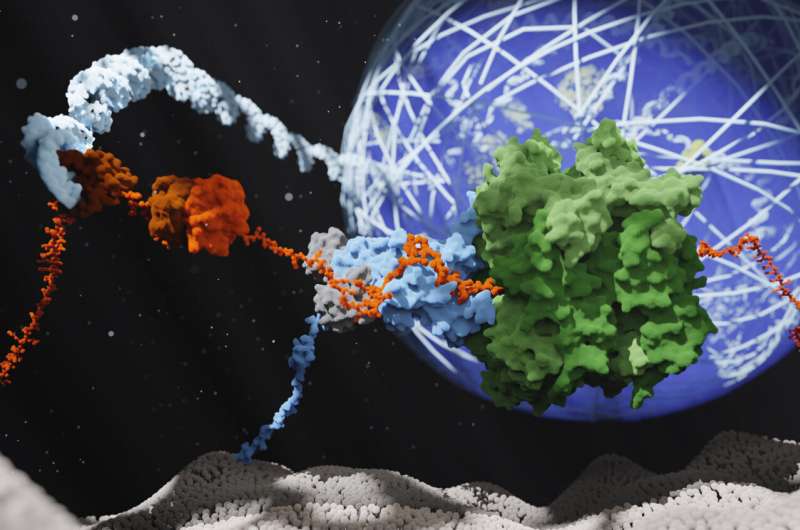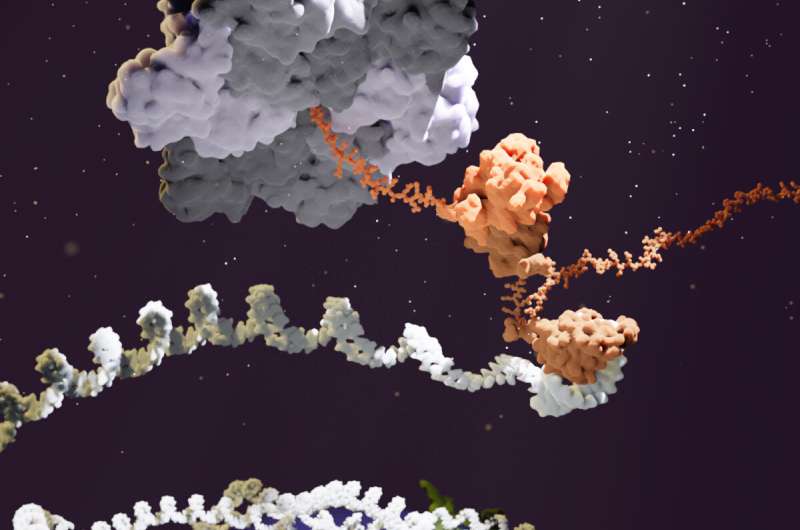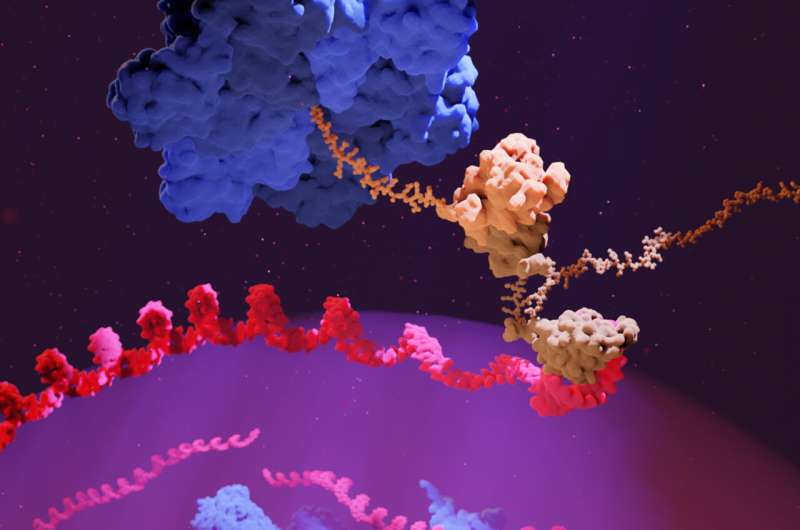Studies reveal key process needed for cells to recover from stress

St. Jude Children's Research Hospital scientists are studying the processes that enable cells to respond and adapt to environmental stress, many of which are also associated with neurodegenerative diseases. In complementary papers in Science, researchers revealed an unexpected role for the process that cells use to get rid of unneeded or unwanted proteins.
The researchers showed the process, called ubiquitination, is involved in stress granule disassembly. The team also revealed detailed mechanistic insights showing the protein G3BP1 is key to the process. Stress granules are known to form in response to some neurodegenerative diseases, such as amyotrophic lateral sclerosis, also called Lou Gehrig's disease.
"We want to understand cell stress responses from a basic cell biology perspective but also because the processes involved in how cells react to stress are relevant to the biology of neurodegenerative diseases," said corresponding author of both papers J. Paul Taylor, M.D., Ph.D., St. Jude Cell and Molecular Biology Department chair and Howard Hughes Medical Institute investigator. "Our work has provided needed clarity on how ubiquitination actually plays an expanded role in stress response."
Cells have to respond to changes in their environment such as heat, toxins, UV light or other damaging factors that cause stress. They do so by either triggering cell death or adapting until the stress is removed.
To adapt, cells can shut down their protein production machinery, metabolomic processes and cell cycle. The cells can also form structures called stress granules. In stress granules, RNAs and the machinery for translation and protein production coalesce into new cell structures.

Study reveals a different function for ubiquitination
The researchers wanted to know how ubiquitination is involved in stress response. To do that, they conducted a proteomic screen to compare the landscape of ubiquitin modified proteins and normal cells experiencing different stresses. The findings indicate that all stresses increased ubiquitination overall. But the list of proteins modified through the process was distinct for each kind of stress.
The researchers then dove deeply into what happens to cells in response to a type of stress called heat shock. When the researchers block ubiquitination in cells experiencing heat shock, translation shuts down, nuclear-cytoplasmic transport is still disrupted, and stress granules still form. However, the team was surprised to find that when the stress was removed, none of these processes reversed.
"These findings suggest that ubiquitination is priming the cell to recover from stress," said first author Brian Maxwell, Ph.D., St. Jude Cell and Molecular Biology Department.

Proteosome research creates research resource
In addition to revealing these key pathways, the proteomic screen helped researchers identify over 10,000 modification sites on different proteins, creating a resource for future studies. This resource allows other researchers to study how a particular protein or pathway of interest is affected by ubiquitination during different types of stress.
"For this study we've created a vast dataset that can be mined for information about how specific proteins are involved in this stress response machinery," Taylor said. "We think it could be a useful resource for future research, and indeed has already benefited our own work."
Mechanistic insights shine light on G3BP1
The researchers used the dataset generated through their prior work to focus on G3BP1, a protein that is involved in regulating stress granules. Their study showed that G3BP1 is modified by ubiquitin during heat shock, but not during other types of stress.

When the researchers blocked ubiquitination of G3BP1, they found that the stress granules formed normally but did not disassemble when the stress was removed. The team also identified several other critical protein factors that interact with G3BP1 in the process of stress granule disassembly by ubiquitination.
"In addition to revealing the crucial role that the G3BP1 protein plays in stress granule disassembly, our work also shows that different forms of stress that have similar effects on cells actually have distinct mechanisms for reversing the stress response," said first author Youngdae Gwon, Ph.D., St. Jude Cell and Molecular Biology Department.
More information: B.A. Maxwell el al., "Ubiquitination is essential for recovery of cellular activities after heat shock," Science (2021). science.sciencemag.org/cgi/doi … 1126/science.abc3593
Y. Gwon el al., "Ubiquitination of G3BP1 mediates stress granule disassembly in a context-specific manner," Science (2021). science.sciencemag.org/cgi/doi … 1126/science.abf6548
"The chains of stress recovery," science.sciencemag.org/cgi/doi … 1126/science.abj2400
Journal information: Science
Provided by St. Jude Children's Research Hospital





















